 W
WAcanthochitona bednalli, the Bednall's chiton, is a species of chiton in the family Acanthochitonidae.
 W
WAcanthopleura is a genus of chitons in the family Chitonidae. In this genus the girdle is spiny or spiky. It has eight described species at present.
 W
WAcanthopleura gemmata, the Jewelled Chiton, is a species of chiton.
 W
WAcanthopleura granulata, common name the West Indian fuzzy chiton, is a medium-sized tropical species of chiton. This type of chiton’s activity does not depend on spring-neap oscillations leading to lower locomotion loss. Its morphology is different from usual chitons as it has a fifth valve, which is split into halves.
 W
WCallistochiton is a genus of polyplacophoran molluscs, alive today, of which fossils are known from the Pliocene period onwards.
 W
WCallochiton crocinus is a species of chiton or "sea cradle" in the family Callochitonidae. It occurs on the shores of the Australia-New Zealand region. Locally, it is known as "smooth chiton", but that name is elsewhere applied to other species.
 W
WCallochiton dentatus, the broad chiton, is a medium to large-sized polyplacophoran mollusc in the family Callochitonidae, found on the coast of southern Africa.
 W
WChiton olivaceus, the green chiton, is a species of chiton, a marine polyplacophoran mollusk in the family Chitonidae, the typical chitons.
 W
WChiton politus, the tulip chiton, is a medium-sized polyplacophoran mollusc in the family Chitonidae, found on the coast of southern Africa.
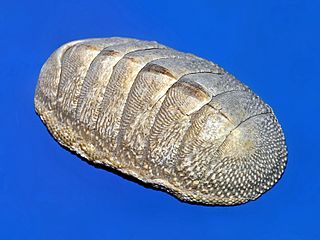 W
WChiton squamosus is a species of chiton, a marine polyplacophoran mollusk in the family Chitonidae, the typical chitons.
 W
WChiton tuberculatus, the West Indian Green Chiton, is a species of chiton, a marine polyplacophoran mollusk in the family Chitonidae, the typical chitons.
 W
WChitonidae is a family of chitons or polyplacophorans, marine mollusks whose shell is composed of eight articulating plates or valves. There are fifteen extant genera in three subfamilies.
 W
WCryptoconchus is a genus of chitons in the family Acanthochitonidae.
 W
WCryptoconchus porosus, the butterfly chiton, is a species of chiton, a marine polyplacophoran mollusc in the family Acanthochitonidae.
 W
WCryptoplax is a genus of polyplacophoran molluscs. The genus consists of the following living species:Cryptoplax burrowi E. A. Smith, 1884 Cryptoplax caledonicus Rochebrune, 1882 Cryptoplax dawydoffi Leloup, 1937 Cryptoplax dimidiata Ang, 1967 Cryptoplax dupuisi Ashby, 1931 Cryptoplax elioti Pilsbry, 1901 Cryptoplax hartmeyeri Thiele, 1911 Cryptoplax iredalei Ashby, 1923 Cryptoplax japonica Pilsbry, 1901 Cryptoplax larvaeformis Burrow, 1815 Cryptoplax mystica Iredale & Hull, 1925 Cryptoplax oculata Quoy & Gaimard, 1835 Cryptoplax plana Ang, 1967 Cryptoplax propior Is. & Iw. Taki, 1930 Cryptoplax royana Iredale & Hull, 1925 Cryptoplax striata Lamarck, 1819 Cryptoplax sykesi Thiele, 1909
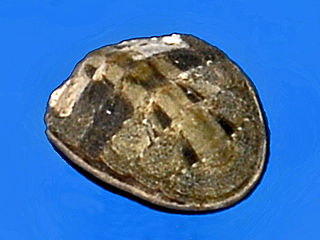 W
WCyanoplax is a genus of chitons in the family Lepidochitonidae.
 W
WCyanoplax hartwegii is a species of chiton in the family Lepidochitonidae.
 W
WDinoplax validifossus, the Natal giant chiton, is a large polyplacophoran mollusc in the family Chaetopleuridae, found on the western coast of southern Africa. It was originally considered a subspecies of the giant chiton.
 W
WEudoxochiton nobilis, commonly called the noble chiton, is a large chiton of the family Callochitonidae. Māori name is Rangitīra.
 W
WIschnochiton is a genus of polyplacophoran mollusc.
 W
WIschnochiton elongatus, the Lengthened chiton or Elongate Chiton, is a species of chiton in the family Ischnochitonidae.
 W
WIschnochiton evanida is a species of chiton in the genus Ischnochiton of the family Ischnochitonidae.
 W
WIschnochiton lineolatus, commonly known as the Lined Ischnochiton is a species of chiton in the genus Ischnochiton that lives under rocks in the intertidal waters of southern and south-western Australia, from Bass Strait to the central west coast. It is commonly found throughout its wide range, and is often found with Ischnochiton cariosus. It grows to 40 mm long. Its back has a brown rim, and white scales with scattered brown dashes parallel with its axis.
 W
WIschnochiton smaragdinus is a species of chiton in the family Ischnochitonidae.
 W
WIschnochiton torri, commonly known as Torr's ischnochiton, is a species of chiton in the genus Ischnochiton that lives under rocks in the intertidal and shallow subtidal waters of southern Australia. It is commonly found throughout its wide range, and is often found with Ischnochiton cariosus. It grows to 40 millimetres (1.6 in) long. Its back has an orange rim and a brown-scaled covering, with a cream-coloured stripe along its axis.
 W
WKatharina is a genus of chitons in the family Mopaliidae.
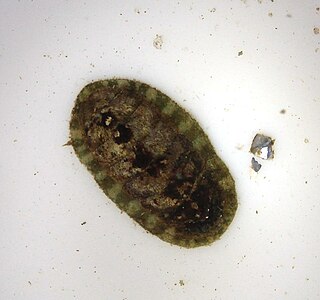 W
WLepidochitona is a genus of chitons. It has been included in the families Tonicellidae, Ischnochitonidae, and Lepidochitonidae.
 W
WLeptochiton is a genus of polyplacophoran molluscs. Some Leptochiton species became extinct during the Pliocene period, but there are also extant species.
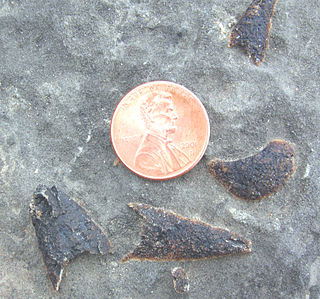 W
WMattheviidae is an extinct taxonomic family of fossil chitons, marine polyplacophoran mollusks that are found in Cambrian-Silurian deposits.
 W
WMopalia is a genus of chitons in the family Mopaliidae.
 W
WMopaliidae is a family of marine molluscs in the class Polyplacophora.
 W
WNotoplax is a genus of chitons in the family Acanthochitonidae.
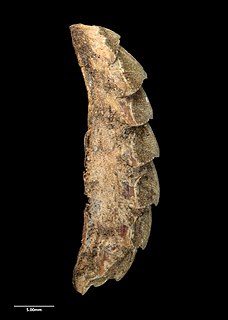 W
WNotoplax mariae is a species of chiton in the family Acanthochitonidae.
 W
WNotoplax rubiginosa is a species of chiton in the family Acanthochitonidae, native to New Zealand. The species grows to 18 millimetres (0.71 in) long and 10 millimetres (0.39 in) wide. N. rubiginosa is known as the most common chiton from the Plio-Pleistocene in fossil records of New Zealand.
 W
WNotoplax subviridis is a species of chiton in the family Acanthochitonidae.
 W
WOnithochiton is a genus of chitons in the family Chitonidae, which is distributed from Australia and New Zealand to South Africa.
 W
WOnithochiton literatus, the black chiton, is a medium to large-sized polyplacophoran mollusc in the family Chitonidae, found on the east coast of Africa.
 W
WOnithochiton neglectus neglectus is a subspecies of chiton in the family Chitonidae. This subspecies is endemic to New Zealand, being mostly found at the East Coast of the North Island and the South Island. O. neglectus neglectus is a brooding chiton, which means that the eggs develop attached to the body of females.
 W
WPlaciphorella, the veiled chiton, is a genus of polyplacophoran molluscs with precephalic tentacles, which are used in feeding.
 W
WPlaxiphora is a genus of chitons in the family Mopaliidae.
 W
WPlaxiphora albida, the White Plaxiphora chiton, is a species of chitons in the family Mopaliidae.
 W
WPlaxiphora tricolor is a species of chiton in the family Mopaliidae.
 W
WRadsia nigrovirescens, the brooding chiton, is a small polyplacophoran mollusc in the family Chitonidae, found on the west coast of southern Africa.
 W
WStenoplax is a genus of polyplacophoran molluscs.
 W
WStenoplax conspicua, the conspicuous chiton, is a species of polyplacophoran mollusc belonging to the family Ischnochitonidae.
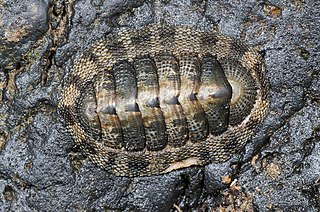 W
WSypharochiton is a genus of chitons in the family Chitonidae.
 W
WSypharochiton pelliserpentis is a species of chiton in the family Chitonidae. As the species name suggests, the surface of the girdle in this chiton has a pattern of overlaying scales resembling snakeskin.
 W
WTonicella is a genus of chitons known as the lined chitons. The genus name derives from the Greek tonos and cell (diminutive).
 W
WTonicia is a genus of chitons in the family Chitonidae. The genus was recently restricted to include only 12 New World species, with the more species-rich and exclusively Old World subgenus Lucilina Dall, 1882, being elevated to a separate genus. Of these 12, ten species are found in the eastern Pacific, one in the Magellan province and one in the Caribbean Sea . However, a study published in 2019 which used molecular systematics to compare the eastern Pacific Tonicia species suggested that there are only 9 extant species in the eastern Pacific.